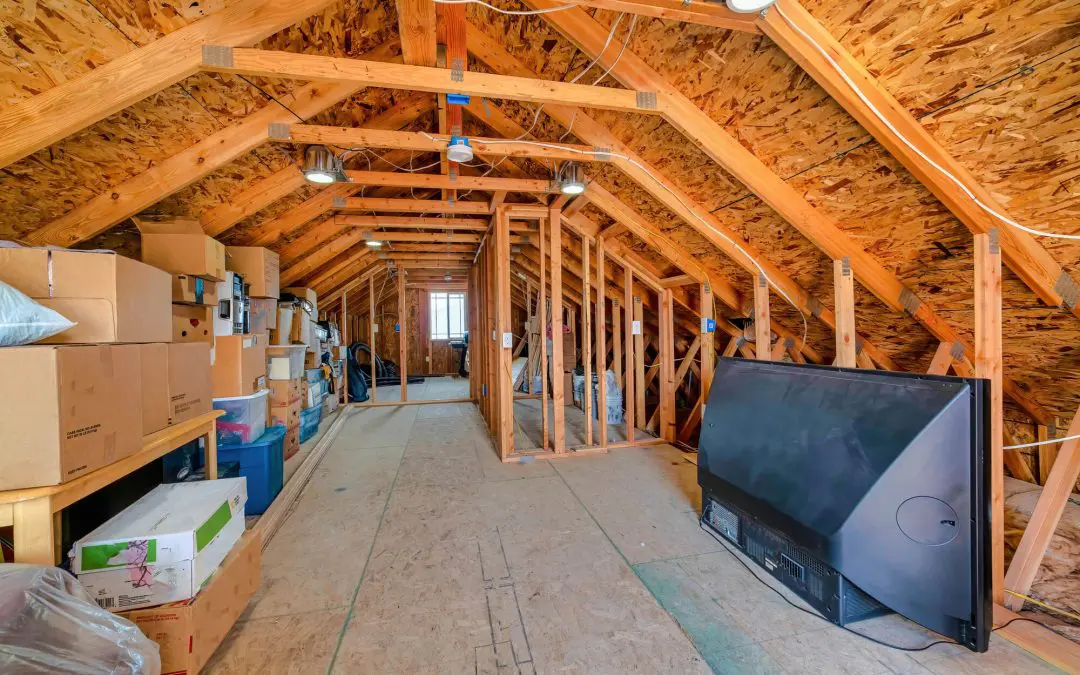Making improvements to your attic can significantly enhance your home’s energy efficiency, comfort, and overall value. Whether you’re looking to insulate your space better, improve ventilation, or even convert your attic into a usable room, these attic improvements can have a lasting impact on your home.
Insulation Attic Improvements
One of the most critical aspects of attic improvement is ensuring proper insulation. A well-insulated attic acts as a barrier between your home and the elements, keeping heat in during the winter and out during the summer. If your attic is under-insulated, you may lose up to 25% of your home’s heat through the roof, leading to higher energy bills and a less comfortable home.
There are several types of insulation to consider, including fiberglass batts, blown-in cellulose, and spray foam. Each has pros and cons, but spray foam often provides the best coverage and air-sealing properties. When upgrading your insulation, it’s essential to ensure it reaches the recommended R-value for your region, which measures its effectiveness.
Ventilation: Preventing Moisture and Heat Buildup
Proper ventilation is just as important as insulation in maintaining a healthy attic. Heat and moisture can accumulate without adequate airflow, leading to problems such as mold growth, wood rot, and decreased insulation efficiency.
Installing ridge vents, soffit vents, and attic fans can help ensure your attic remains well-ventilated. These systems work together to promote air circulation, expelling hot air in the summer and reducing moisture buildup year-round. A well-ventilated attic can also help prolong the life of your roof by preventing ice dams in the winter and reducing the strain caused by heat in the summer.
Sealing Air Leaks During Attic Improvements
Air leaks in your attic can significantly impact your home’s comfort and energy efficiency. These leaks often occur around areas like recessed lighting, plumbing vents, and access hatches, allowing conditioned air to escape and outdoor air to seep in.
To address this, you’ll need to thoroughly inspect your attic and seal any gaps or cracks using caulk or expanding foam. In some cases, you may also need to install weatherstripping around the attic door or hatch. By sealing air leaks, you can maintain a consistent temperature throughout your home, reduce energy costs, and enhance indoor comfort.
Flooring and Storage Solutions: Maximizing Usable Space
If your attic is spacious and easily accessible, consider installing flooring to create additional storage or living space. Attic flooring can provide a safe, stable surface for walking and storing items, helping you make the most of this often-overlooked area of your home.
When installing flooring, it’s essential to ensure that your attic’s structure can support the additional weight. You may also want to consider adding pull-down stairs or a more permanent staircase to make accessing your attic easier and safer. With the right improvements, your attic can be transformed into a functional, organized space that adds value to your home.
Lighting and Electrical Attic Improvements
Upgrading your attic’s lighting and electrical systems can make the space more usable and convenient. Installing energy-efficient LED lights or even skylights can brighten up the area, making it more inviting and functional. If you plan to use your attic as a living space or home office, you may need to add electrical outlets and improve the wiring to accommodate your needs.
When making electrical upgrades, hiring a licensed electrician is crucial to ensure that all work is done safely and up to code. Proper lighting and electrical improvements can enhance the usability of your attic, making it a more enjoyable part of your home.
Attic improvements are an investment in your home’s long-term comfort, energy efficiency, and value. Whether adding insulation, improving ventilation, or converting the space into a functional room, these upgrades can provide significant benefits.
FAQs
How do I know if my attic insulation needs to be replaced?
If your energy bills are higher than usual, or you notice uneven temperatures in your home, your attic insulation may be insufficient or degraded. Check for signs like visible gaps, compressed or discolored insulation, or drafts. If your insulation is over 10-15 years old, it might be time for an upgrade.
What is the best type of insulation for attics?
The best insulation for your attic depends on your needs and budget. Spray foam offers excellent coverage and air-sealing properties, making it ideal for maximizing energy efficiency. Fiberglass batts and blown-in cellulose are more affordable options and, if installed correctly, provide good insulation.
What should I do if I find mold in my attic?
If you discover mold in your attic, it’s crucial to address it immediately. Start by fixing any leaks or ventilation issues causing moisture buildup. Then, clean the affected areas with a mold removal solution. For extensive mold problems, consider hiring a professional mold remediation service.
How much weight can my attic floor support?
The weight your attic floor can support depends on the structure of your home. Typically, attic floors can support 10-20 pounds per square foot. Before adding heavy items or converting your attic into a living space, consult a structural engineer to assess the floor’s load-bearing capacity.
Second Opinion Home Inspections offers professional inspections for customers in Door and Kewaunee counties. Contact us to schedule an appointment for our services.

